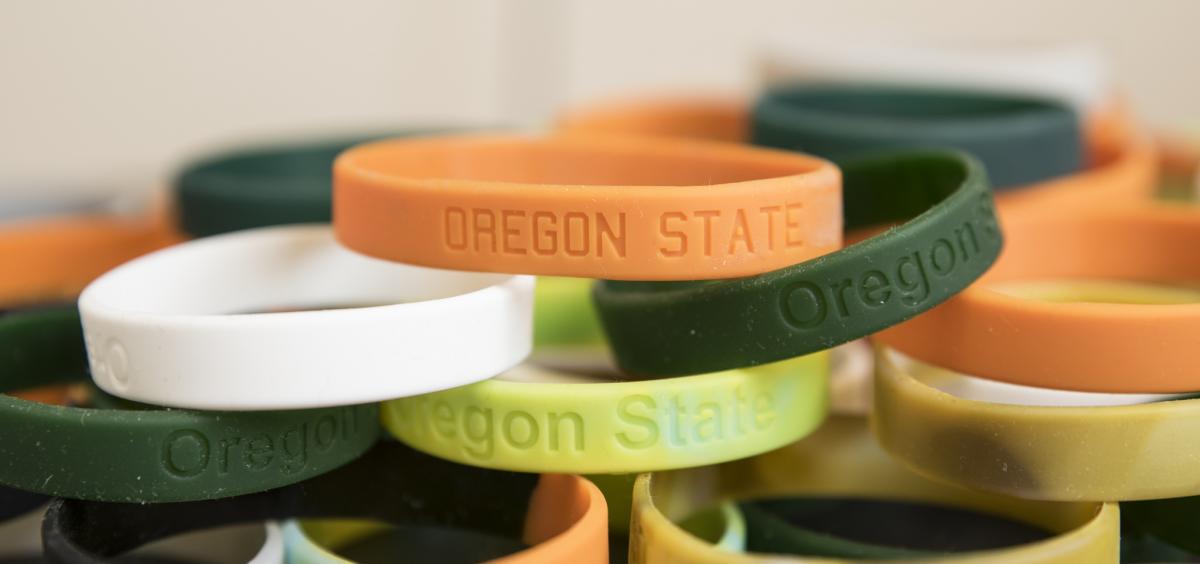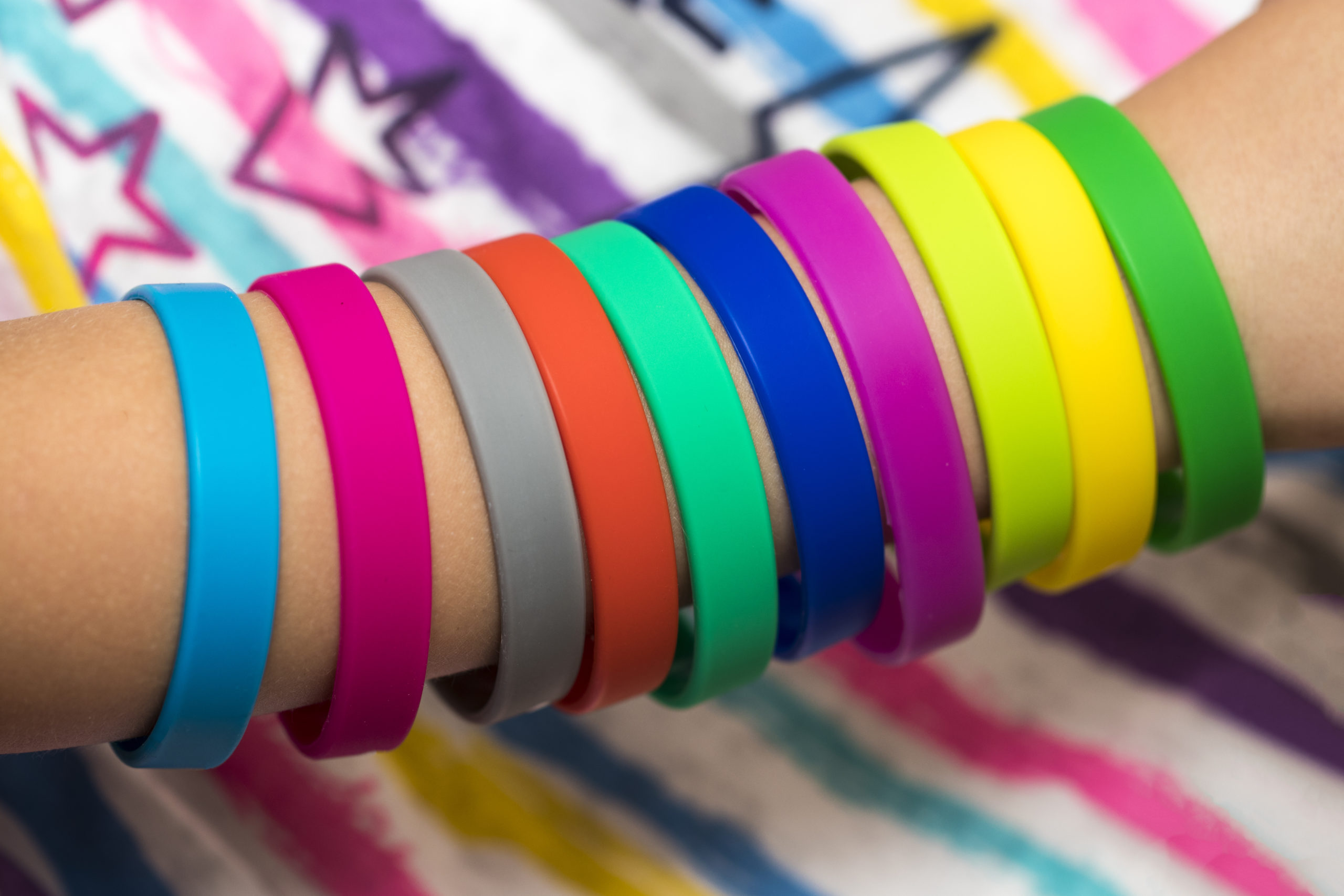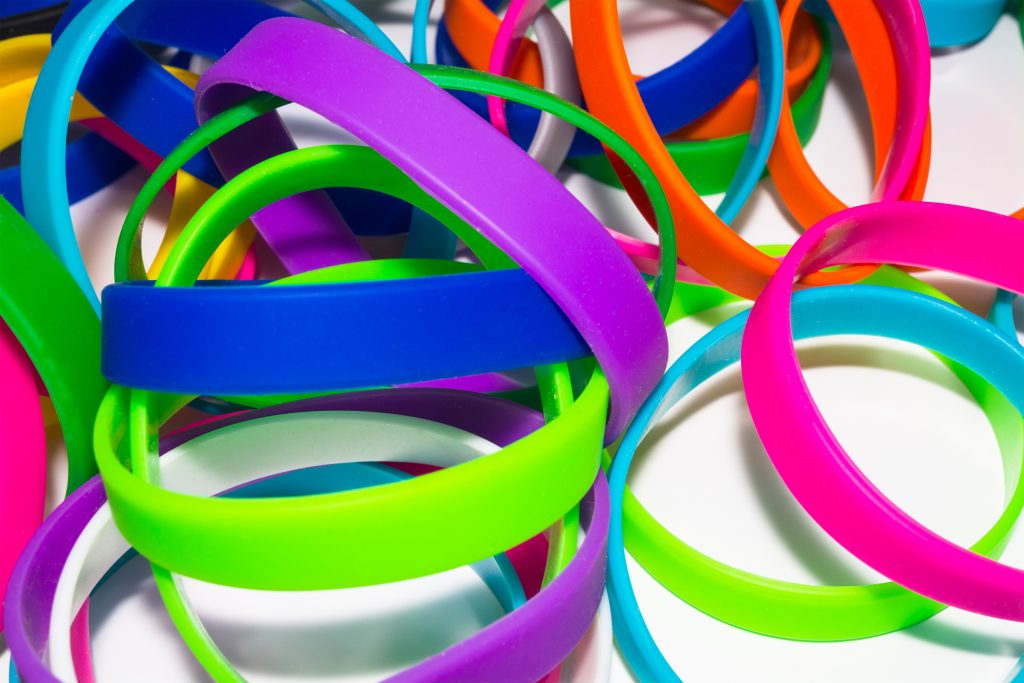Last Updated on June 5, 2024 by Annie Baldwin
Silicone wristbands have become ubiquitous in recent years.
You see them everywhere – concerts, conferences, fundraisers.
But are these wristbands actually environmentally friendly? Let’s take a look.
Are Silicone Wristbands Environmentally Friendly?

Yes, silicone wristbands are generally considered an environmentally friendly product.
They are made of non-toxic silicone rubber and are recyclable.
Silicone also degrades slowly over hundreds of years, so it does not quickly fill up landfills.
Silicone wristbands have a lower environmental impact compared to disposable wristbands.
Key Points
- Silicone is non-toxic and does not release harmful chemicals
- Silicone wristbands are recyclable, though small quantities make this less feasible
- Silicone degrades very slowly over hundreds of years
Our Opinion
In my expert opinion, silicone wristbands are one of the more environmentally friendly options for promotional bracelets.
The non-toxic silicone material makes them safe for people and the environment.
Recycling silicone wristbands are ideal, though the slow degradation means they will persist for a very long time.
Ultimately, reusable options like silicone are better than disposable wristbands for reducing waste.
Are Silicone Wristbands Recyclable?

The good news is yes, silicone wristbands are recyclable! Silicone is a very durable material that can be recycled and reused multiple times. Unlike their rubber counterparts, silicone wristbands have a much longer lifespan and can be made from recycled plastic bottles. This makes silicone one of the most eco-friendly wristband options.
You can also find wristbands made from other green materials like bamboo or RPET (recycled polyethylene terephthalate). There are even fabric wristbands available made from recycled plastic bottles or other eco-friendly fabrics.
While recycling one or two wristbands may not be feasible, if you’re ordering wristbands in bulk for an event or promotion, choose a company that offers recycling. This ensures your wristbands don’t end up in a landfill after they’ve served their purpose.
The bottom line is silicone wristbands are a stylish, cost-effective, and recyclable choice. When sourced and disposed of responsibly, they’re one of the most environmentally friendly wristband options out there.
How Are Silicone Wristbands Manufactured?
Silicone wristbands are manufactured through an intricate process that transforms liquid silicone into the flexible, durable bands we know. Here’s a quick look at how it works:
First, liquid silicone is injected into molds and cured using precise time and temperature controls. This gives the wristbands their shape.
Next, the wristbands are removed from the molds and undergo an extensive cleaning process to remove any residues or impurities.
After cleaning, the wristbands are imprinted using state-of-the-art digital printing or silk screening. This applies to any graphics, text, or colors.
Finally, the finished wristbands undergo rigorous quality control checks. This ensures they meet specifications for dimensions, print quality, and durability.
From liquid silicone to finished products, experienced manufacturers follow meticulous protocols. High-quality standards and strict quality control at every stage result in durable, consistent, stylish silicone wristbands.
Do Silicone Wristbands Contain Toxic Chemicals?
When it comes to silicone wristbands, many people wonder if these popular accessories contain harmful chemicals that could be absorbed through the skin. The good news is that high-quality silicone wristbands made by reputable manufacturers are free of toxic chemicals.
Silicone itself is considered biologically inert and hypoallergenic. Unlike their rubber counterparts, silicone wristbands do not contain latex proteins that can cause allergic reactions. Silicone is also free of BPA, lead, phthalates, and other toxic substances.
Studies have found no evidence that chemicals in silicone wristbands migrate to the skin or cause harm. An Ohio State University study analyzed wristbands worn for up to two years and detected no chemical exposure.
Responsible manufacturers test their silicone wristbands to ensure they meet strict safety standards. Any dyes or inks used in printing designs on the bands must also be non-toxic.
So you can feel confident wearing these popular wristbands knowing they are a safe, non-toxic accessory when produced by reputable companies using medical-grade silicone.
How Long Do Silicone Wristbands Last Compared to Other Materials?

Silicone wristbands have an exceptionally long lifespan compared to wristbands made from other materials. Here are some key facts:
- Silicone wristbands can last 1-2 years or longer with normal wear. The high-quality silicone material is very durable. Silicone doesn’t degrade as quickly as materials like rubber or cotton.
- Recycled plastic wristbands have a shorter lifespan of a few months. Plastic wears out faster than silicone.
- Bamboo wristbands are biodegradable and compostable, but only last a few weeks or months before deteriorating.
- RPET fabric wristbands made from recycled bottles last 6-12 months typically. The fabric breaks down over time.
- Rubber wristbands are cheaper but degrade in a matter of weeks or months when exposed to sun, heat, and skin oils.
So for the longest lifespan, silicone is the clear winner. Silicone wristbands remain intact for the longest period, making them a cost-effective choice.
Are There Eco-Friendly Options for Silicone Wristbands?
Yes, there are several ways to make silicone wristbands more eco-friendly:
- Many suppliers now offer wristbands made from recycled silicone. This repurposes industrial silicone waste into stylish new bands.
- Look for wristband manufacturers that use minimal plastic packaging or paper envelopes instead of plastic. This reduces waste.
- Some suppliers plant a tree for every order or donate to environmental causes. This helps offset the eco-impact.
- Consider ordering undyed or light pastel wristbands. Avoiding dark dyes reduces the need for chemical processing.
- Recycle your old wristbands if possible. silicone can be reprocessed and given new life in other products. Not all recycling centers accept silicone but some do.
- Order wristbands printed with eco-friendly inks, many suppliers now offer plant-based or water-based inks. Avoid PVC inks.
- Choose a supplier committed to sustainability and reducing their environmental footprint through manufacturing processes.
So by choosing recycled silicone materials, minimized packaging, and eco-friendly inks, silicone wristbands can be an environmentally responsible choice.
FAQ
Is Silicone Harmful to the Environment?
No, silicone is generally considered environmentally friendly and safe. It does not contain toxic chemicals and does not produce harmful byproducts.
Are Silicone Wristbands Recyclable?
Yes, silicone wristbands can be recycled, though the small size makes it less economically feasible on an individual basis. Recycling centers may collect bulk amounts of silicone wristbands for recycling.
How Long Does It Take for Silicone to Biodegrade?
Silicone does not biodegrade, but it can degrade over time when exposed to UV rays and oxygen. This process takes an extremely long time, upwards of hundreds of years.
What Are Silicone Wristbands Made Of?
Silicone wristbands are made of silicone rubber, which is a synthetic polymer made up of silicon, oxygen, and other elements. The raw silicone rubber is colored and molded into the shape of a wristband.
Conclusion
Silicone wristbands can be considered environmentally friendly. They are made of non-toxic materials and are recyclable, though the recycling process is more feasible for large collections of wristbands. Silicone also degrades very slowly over an extremely long period of time. Ultimately, silicone wristbands have less impact on the environment compared to disposable plastic and rubber wristbands.